There are many mountains and rivers in China, with beautiful scenery and a long history. These 10 mountains are the most beautiful and famous, and everyone is worth a trip.The Top 10 Most Beautiful Famous Mountains In China are these:
1.Namcha Barwa:Heaven in the clouds 南迦巴瓦:云中的天堂
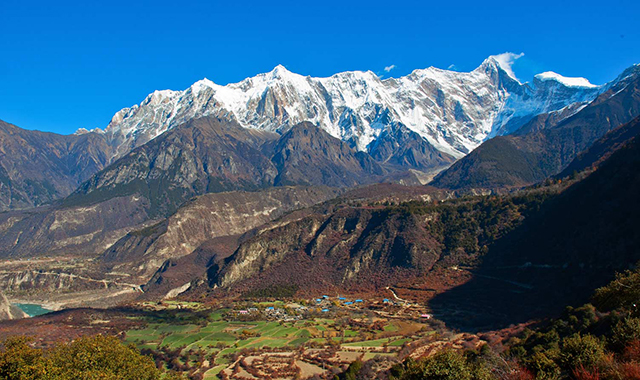
Located at the intersection of the Himalayas, the Nyainqentanglha Mountains and the Hengduan Mountains, it is the highest mountain in Nyingchi, Tibet, at an altitude of 7782 meters. It is located at the eastern end of the Himalayas (8125 meters above sea level in Kashmir, west of the Himalayas). Butte Peak, to the south of the Yarlung Zangbo River in the south of the Namcha Barwa Peak, with a total length of 2,400 kilometers).
It is the sacred place of Tibet’s oldest Buddhist “Zhu Zhongben” and is known as the “father of the mountains in Tibet”. At the same time, the adjacent Yarlung Zangbo Grand Canyon turned a horseshoe-shaped bend around him and then extended to the Indian Ocean. Namcha Barwa Peak has another name, “Muzhuo Bal Mountain”. Its huge triangular peaks are covered with snow all the year round, and the clouds are haunted. It is never easy to reveal the true colors, so it is also called “Shameful Peak”. Namcha Barwa has many explanations in the Tibetan Mastiff. One is “Thunder and Light Burning”, the other is “The Spear of the Straight Sky”, and the other is the “Stone of the Tianshan Mountain.” The latter name comes from In the King Gesar’s Biography, “The Battle of the Gates”, in this section, depicts the Nanga Bawa Peak as a “spear to smash the sky.”
2.Gongga Shan:The wind stopped 贡嘎:风停止了脚步
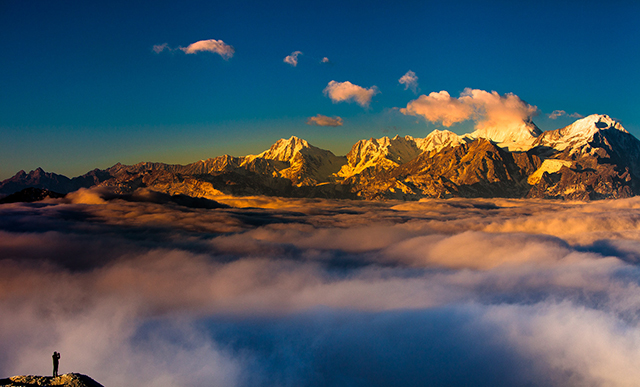
Gongga Shan, also known as Minya Konka, is located in the south of Kangding, Sichuan Province, and is the main peak of the Daxue Mountain. There are 45 peaks around 6,000 meters above sea level. The main peak stands on the peak of the peaks. It is 7556 meters above sea level and 6000 meters above the Dadu River on the east side. It is the highest mountain in Sichuan Province and is known as the “King of the Mountain”. National Scenic Area.
The main peak of Gongga Mountain is composed of granodiorite. It is affected by the ocean monsoon and forms diverse vegetation and natural ecological environment. There are two sister canyons in the mountains: Yanzigou and Hailuogou. The Yanzigou is also known as the Eastern Alps. . The Gonglu Mountain snow line is 4600-4700 meters above sea level, and the scale of glaciers is large. The largest Hailuogou glacier on the east slope is 14.2 kilometers long and 2850 meters at the end. It has fallen into the forest belt. Under the action of long-term glaciers, the mountain peaks into cone-shaped large peaks, and the cliffs around 60°-70° are difficult to climb. .
3.Everest:Watch of the soul 珠穆朗玛:心灵的守望
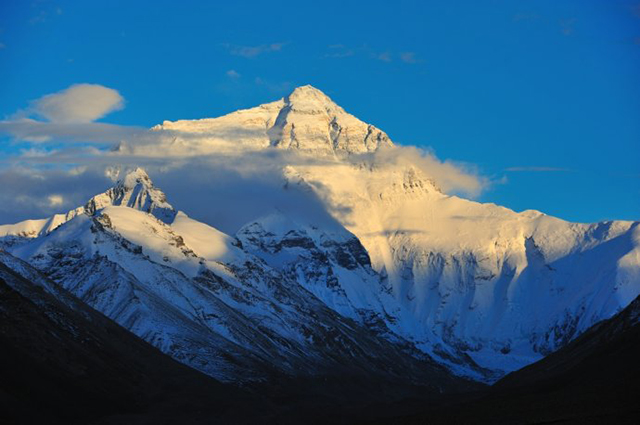
Mount Everest (Emei) is the main peak of the Himalayas and the highest mountain in the world. It is located on the border between China and Nepal, and is located in the north of China’s Tibet Dingri County (Western slopes in Dingri County, Zhaxi Township, East Slope is located in Qudang Township, Dingri County, with Everest Base Camp), and the south is located in Nepal. The peak is located in China, the highest peak in the world, and the center of China’s Everest Nature Reserve and Nepal National Park spanning four counties.
In Tibetan, “Zhu Mu” means the goddess, and “Langma” means the third. Because there are four peaks near Mount Everest and Mount Everest is third, it is called Mount Everest.
Mount Everest has two heights: the climber is on the overall height, and the snow cover height (total height) used by climbers in Nepal is 8,848 meters (29029 feet). The rock face height measured by the China National Bureau of Surveying and Mapping in 2005 (naked) The height is the geologic height) is 8844.43 meters. From 2010, the two height measurement data are recognized. In addition to being the highest mountain in the highest altitude, it is also the fifth highest distance from the center of the earth.
4.Meri:The guard of honor of Snow God 梅里:雪神的仪仗队
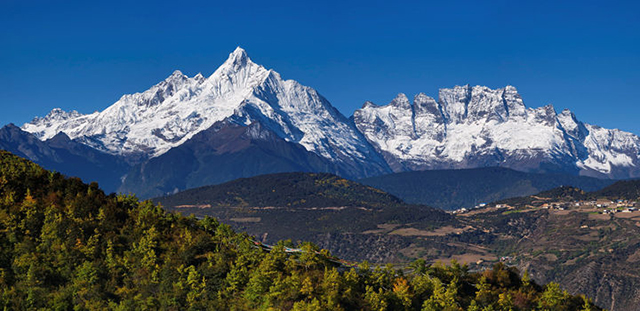
Meili Snow Mountain is a large north-south snow-capped mountain group located in the eastern part of Tibet’s Chayu County and west of Yunyunling Township, Deqin County, Yunnan Province. It has a total length of 150 kilometers. It is called Kawagbo Snow Mountain in the Tibetan area. The word “Meri” is the Chinese translation of the main language of Deqin Tibetan, meaning that Yaoshan is named for its rich variety of precious herbs. At the same time, it is also the holy place of Yizhong Bon, and the Gang Rinpoche of Tibet, the Animaqing Mountain of Qinghai, the Juduo Jue of Qinghai and the four great mountains of Tibetan Buddhism.
The highest peak Kawagbo Peak is 6,740 meters above sea level. It is the highest mountain in Yunnan Province. It is located 10 kilometers southwest of Deqin County and 184 kilometers away from Zhongdian County. It is about 30 kilometers long, and the highest peak in the pyramid shape is Kawagbo Peak. It is 6,740 meters above sea level. It is the highest mountain that stands close to the top of the mountain range and is the highest peak in Yunnan Province. The Meili Snow Mountain fault activity is strong and towering. There are 13 peaks above 6000 meters above sea level, surrounded by the Kawagbo Peak. It is the highest mountain on the southeastern edge of the Qinghai-Tibet Plateau.
5.Huangshan:God’s bonsai 黄山:上帝的盆景
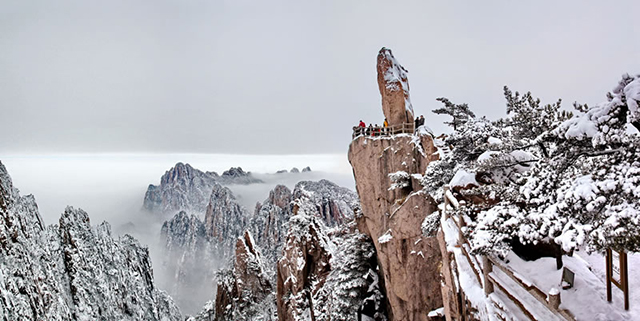
Huangshan: World Cultural and Natural Double Heritage, World Geopark, National AAAAA-class tourist scenic spot, national-level scenic spot, national civilized scenic tourist area demonstration site, China’s top ten famous mountains, the world’s first Qishan.
Huangshan is located in Huangshan City, southern Anhui Province, with 72 peaks. The main peak of the Lotus Peak is 1864 meters above sea level. It is also known as the main peak of the three major Huangshan Mountains with Guangmingding and Tiandu Peak, one of the 36 peaks. Huangshan is the symbol of Anhui tourism and the only mountain scenery in China’s top ten scenic spots.
Huangshan was originally called “Lushan”, because the peak rock is black and black, and it looks at the sky. After the legend, Xuanyuan Huangdi used to be alchemy, so it was renamed “Huangshan.” Huangshan represents the landscape with “four unique three waterfalls”, four musts: Qisong, strange rocks, Yunhai, hot springs; three waterfalls: Herringbone Waterfall, Baizhang Spring, Jiulong Waterfall. Huangshan Yingkesong is a symbol of the warm and friendly people of Anhui, carrying the oriental etiquette culture that embraces the world.
When Xu Xiake, a traveler of the Ming Dynasty, boarded the Huangshan Mountain, he praised: “The famous mountain inside and outside the thin sea is like the Huangshan Mountain of the Huizhou. It is the mountain of Huangshan, there is no mountain in the world, and the scenery is stopped!” The descendants extended it as “the return of Wuyue does not look at the mountains, and the return of Huangshan does not look.” Yue”.
6.Daocheng Sanshen Mountain:Shangri-La Landmark 稻城三神山:香格里拉的地标
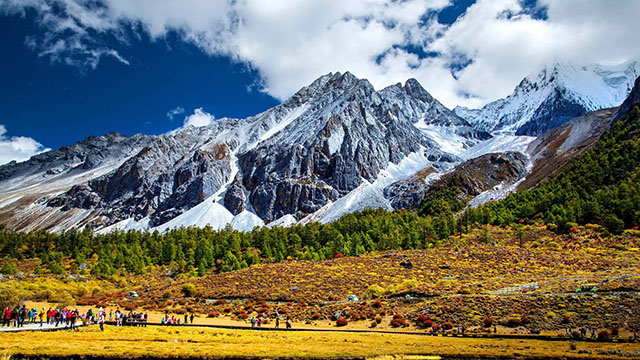
In the Sancheng Mountain of Daocheng, the Tibetan language is pronounced “Gongga Risong Gongbu” (Tibetan meaning “three holy mountain guards of the mountain”.) The three shrines are more than a thousand square kilometers, and the main part is three. Completely separated, but not far apart, the snow peaks are arranged in a “pin” shape.
Daocheng Sanshen Mountain Beifeng Xiannai is 6032 meters, Nanfeng Yangmaiyong is 5958 meters, and Dongfeng Shanuoduoji is 5958 meters. The three snow peaks are white and sturdy, like a sharp sword. Xian Nai is like a big Buddha, proudly holding a lotus seat; Yang Mai is like a girl, quiet and dignified, ice and clear jade; Xia Nuo Duoji is like a teenager, strong and resolute, and he is a god. There are many peaks and peaks around the snow peaks. There are more than 30 large and small, and they are spectacular.
In front of the mountain, there are lakes and meadows with blue jade. The glacier under the snow line is straight into the green virgin forest. Snow mountains, cliffs, cliffs, seas, glaciers, pastures, forests, streams, create a quiet, peaceful world.
7.Jogori:A distant mystery 乔戈里:遥远的秘境
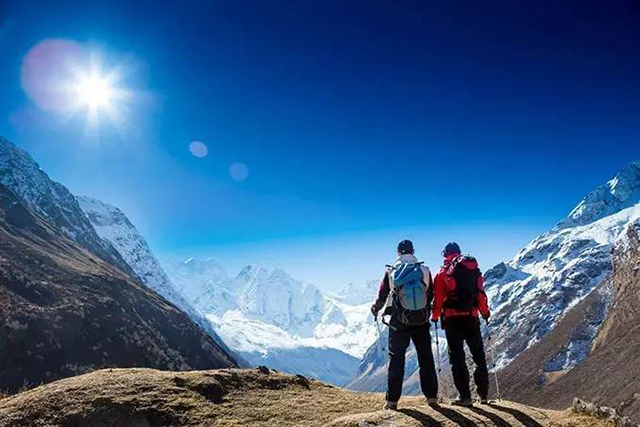
“Jogori”, Tajik, means “high and majestic.” At an altitude of 8611 meters, the Qiaogeli Peak is the main peak of the Karakoram Mountains and the second highest peak in the world. It is also known as the K2 Peak. The Qiaogeli Peak is located at 76.5 degrees east longitude and 35.9 degrees north latitude. It is located in the middle of the Karakorum Mountains. It belongs to the Chinese side and is located in Yecheng County, Xinjiang Uygur Autonomous Region.
In the mountaineering industry, Qiaogeli has the title of “surprise peak” and “no peak of return”. It is also known as “the most dangerous mountain”. It is recognized as the most difficult 8000-meter peak, and it is also mountain climbing. The highest spiritual sanctuary in the mind, it belongs only to first-class climbers. Reinhold Messner, the greatest mountaineer of the twentieth century, after the climb of the Jogori peak in the Alps in 1979, called K2 “the king of the mountains” with awe. Sufficient to illustrate the special status of the Jogori
8.Kangrinboqe:The Residence of the Gods 冈仁波齐:众神的居所
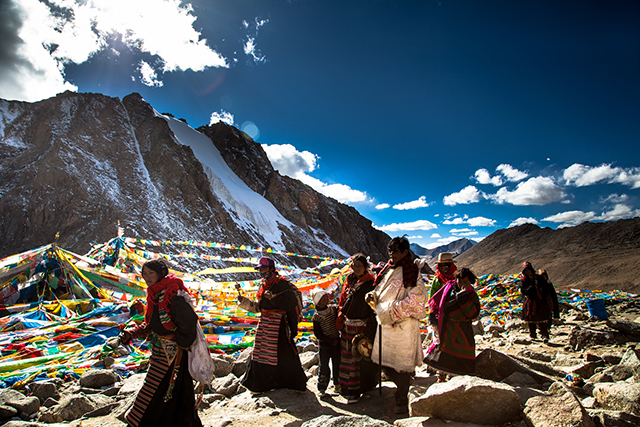
Kangrinboqe and Meili Snow Mountain, Animaqing Mountain Range, Qinghai Yushu, and the four great mountains of Tibetan Buddhism. The Gangdese Mountains traverse between the northern Kunlun Mountains and the southern Himalayas, such as a giant dragon lying on the vast plateau of Ali in western Tibet. Its high-rise head, such as a large pyramid, stands on the plateau of Alibland, which is the main peak of the 6656-meter-high Kangrinboqe.
Kangrinboqe is recognized as the world’s god mountain, and is recognized as the center of the world by the Chinese Tibetan monk, Hindu, Tibetan Buddhism, and ancient Jain.Kangrinboqe is not the highest mountain in the region, but only its peak of snow all year round shines with the radiance of the sun shining in the eyes. It is said that the most famous Mausoleum in Buddhism refers to Kangrinboqe. According to the “Little Dictionary of Buddhism”: Sumi, the name of the mountain, the center of a small world. In the pre-Buddhist era, the elephants were in the middle of the period of the sect, and the Kangrinboqe was called the “Jiuzhong (wan) word mountain”. It is said that 360 gods of Bon religion lived here. The ancestors of the Bon dynasty, Dunbazin, descended from the sky, and the mountain was the place to land. In the Jainism that rose in the 5th-6th centuries BC,Kangrinboqe was called “Ashta Podah”, the highest mountain.
9.Taishan:China’s Totem 泰山:华夏的图腾
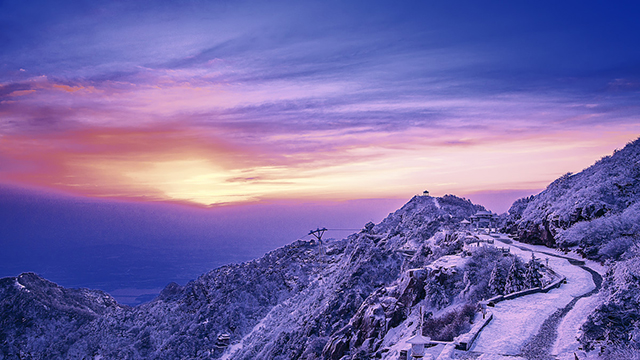
Taishan, also known as Lushan, Yuzong, Yuyue, Dongyue, Taiyue, is located in the central part of Shandong Province and is affiliated to Tai’an City. It is located between Tai’an, Jinan and Zibo, with a total area of 24,200 hectares. The main peak of Jade Emperor Peak is 1,545 meters above sea level. It is magnificent and majestic. It has the title of “the first of the Five Sacred Mountains”, “the longevity of the Five Sacred Mountains”, the Respect of the Five Sacred Mountains, and the “First Mountain in the World”. It is the world’s natural and cultural heritage, the World Geopark, the national AAAAA-level tourist scenic spot, the national-level scenic spot, the national key cultural relics protection unit, and the national civilized scenic tourist area.
Taishan is regarded by the ancients as a paradise for “direct access to the emperor”. It has become the worship of the people, and the emperor’s sacrifice to the mountain of God, there is the saying that “Taishan An, all the seas are safe”. Since the beginning of Emperor Qin Shihuang to the Qing Dynasty, there have been 13 generations of emperors who have been introduced to Taishan to seal the Zen or sacrifices. In addition, there are 24 generations of emperors who have sent officials to worship 72 times.
There are more than 20 ancient buildings on the mountain of Taishan Mountain, and more than 2,200 stone tablets. Taoism and Buddhism regard Taishan as the “Xiangshan Buddhism” and deify the Taishan Mountain. A large number of temple temples have been built in Taishan.
Taishan is a symbol of the Chinese nation, a microcosm of the oriental culture, a place for the “Heaven and Man” idea, and a home for the Chinese national spirit.
10.Mount Emei:From the basin to the heavens 峨眉山:从盆地升向天庭
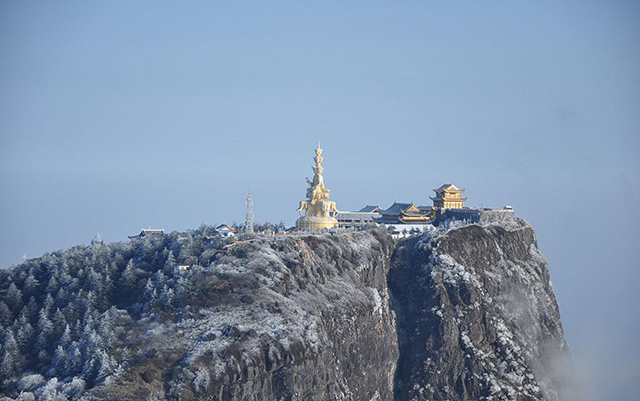
Mount Emei is located in Emeishan City, Leshan City, Sichuan Province, China. It is one of the “Four Famous Buddhist Mountains” in China. It has a steep terrain and beautiful scenery. It is known as the “Emei World Show” and the highest in the mountain. 3099 meters, more than 2,700 meters above the Emei Plain. “Emei County” cloud: “Clouds and scent, sleek makeup, really like a dagger moth, thin and long, beautiful and beautiful, hence the name Emeishan.”
Emei Mountain is located at the intersection of various natural elements. The flora is complex, rich in biological species, endemic with many species, and preserves a complete subtropical vegetation system. There are more than 3,200 species of plants, accounting for about one-tenth of the total number of Chinese plant species. Mount Emei is also home to a variety of rare animals, with more than 2,300 species of animals. There are more monkeys along the mountain road, and the team often asks for tourists to eat, which is a major feature of the mountain.